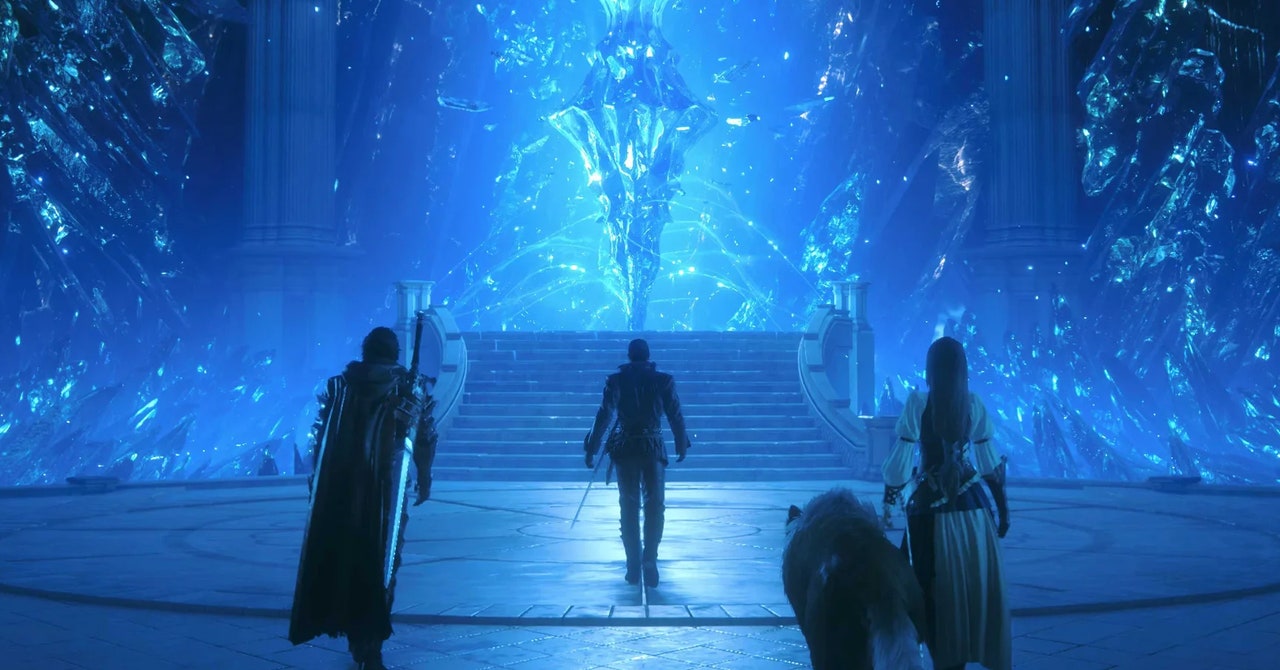There’s a sequence early in Final Fantasy XVI that made me cringe. A few dramatic plot beats, including a few throat-cuttings and a kid getting hosed like he’s in a slasher film, lead into a fight between two characters in beastly forms. The end result is bloody—like, really bloody, as the victor repeatedly smashes the other’s skull and the camera focuses on the crimson smears around them. Then there’s the squishing, the awful, high-fidelity, wet, juicy fruit-fisting squishing that accompanies the whole thing.
It’s a little gross. And as a longtime Final Fantasy player, more than a little shocking.
With Final Fantasy XVI, Square Enix returns the series to a more traditional fantasy-based setting: a world of magic, warring kingdoms, and otherworldly creatures. Nations rely on Dominants, a handful of special individuals with the power to transform into Eikons—massive, powerful entities with the ability to tear apart entire battlefields—to maintain their sovereignty. Clive, the game’s lead, is the sworn protector of his kingdom’s Dominant, and his younger brother, Joshua. But things go wrong, as they are wont to do, and Clive’s life is shattered, leaving him to seek vengeance. With this vengeance comes Game of Thrones–esque plotting, gore, and more risqué scenes than the series has had before.
Final Fantasy has never been a death- or even violence-free series. Final Fantasy VII, released in 1997, is known for the series’ most shocking demise—a swift murder where a beloved character takes a roughly 8-foot sword to the torso in a bloodless execution. Other games like Final Fantasy Type-0, a particularly dark entry, gave its cast a variety of especially bloody deaths. But there’s something different about how Final Fantasy XVI feels this time around. During a recent five-hour demo of the game, I played through a lot of murders, beheadings (or so it seemed—they took place just off-camera), people liquidated by falling rocks, a valid threat to cut a kid’s throat, and a steamy reunion between lovers that added a wall as their third. It’s Final Fantasy by way of HBO.
Producer Naoki Yoshida has talked about the Final Fantasy XVI team’s keen interest in telling a darker story, one that’s landed them a series-rarity “mature” rating. “It’s not like we want to go out of our way to create something that’s violent,” Yoshida told WIRED in February. “We want to go out of our way to create something that feels real.” While I’ve never been part of a medieval-esque warring nation with magical crystals, Final Fantasy XVI does clearly—and immediately—cast aside any fairy-tale notions that players are in for a soft ride.
To be clear, the game is not all blood splatters and horny hookups. The section I played was straightforward, without much room to explore, but battles feel fun and fast-paced. The game eschews a typical party structure and keeps players firmly in charge of Clive and Clive alone. He can issue commands to his loyal hound during battles, but anyone else who joins for a fight does their own thing. While I didn’t get access to his full range of abilities, Clive does gain Eikon-specific moves as the game goes on, meaning players can quickly swap between a fiery spin from a Phoenix, for example, to something swift from a wind-based Eikon.
Most Final Fantasy games take upward of 40 hours to play—I only got five. Will the whole thing be a shock to the systems of longtime players? They’ll have to wait until XVI comes out on June 22 to know for sure. But one thing is clear: This is not going to be a road trip with the boys.

























